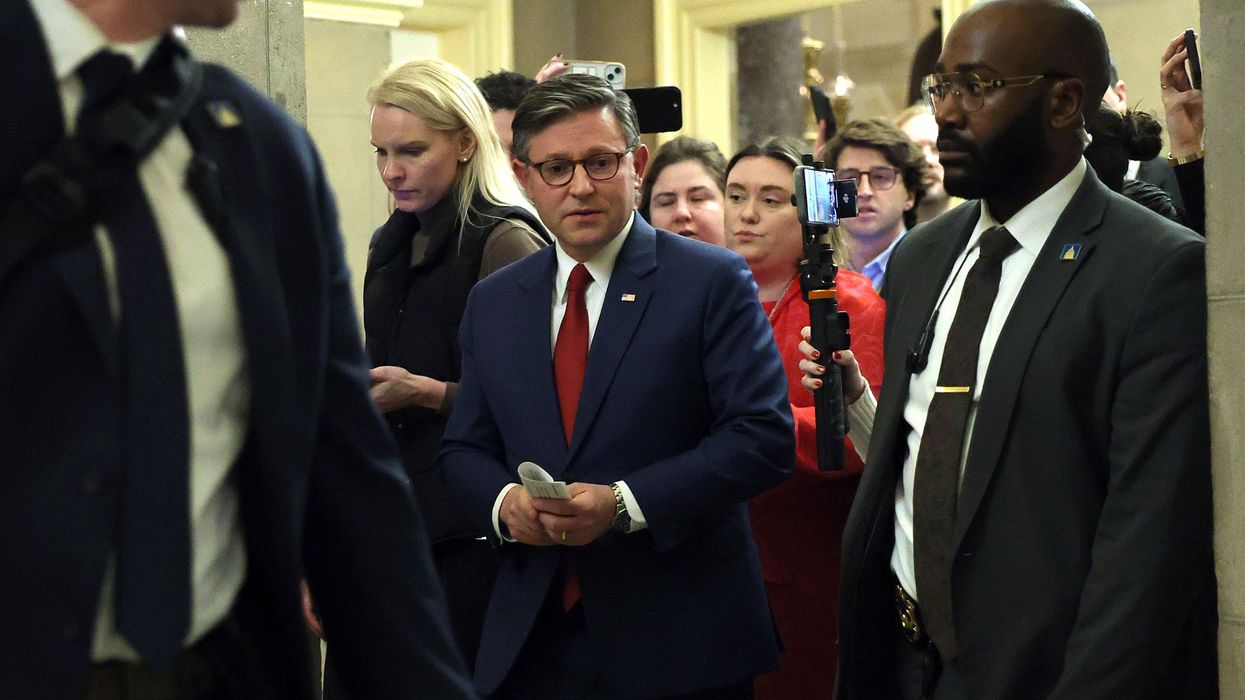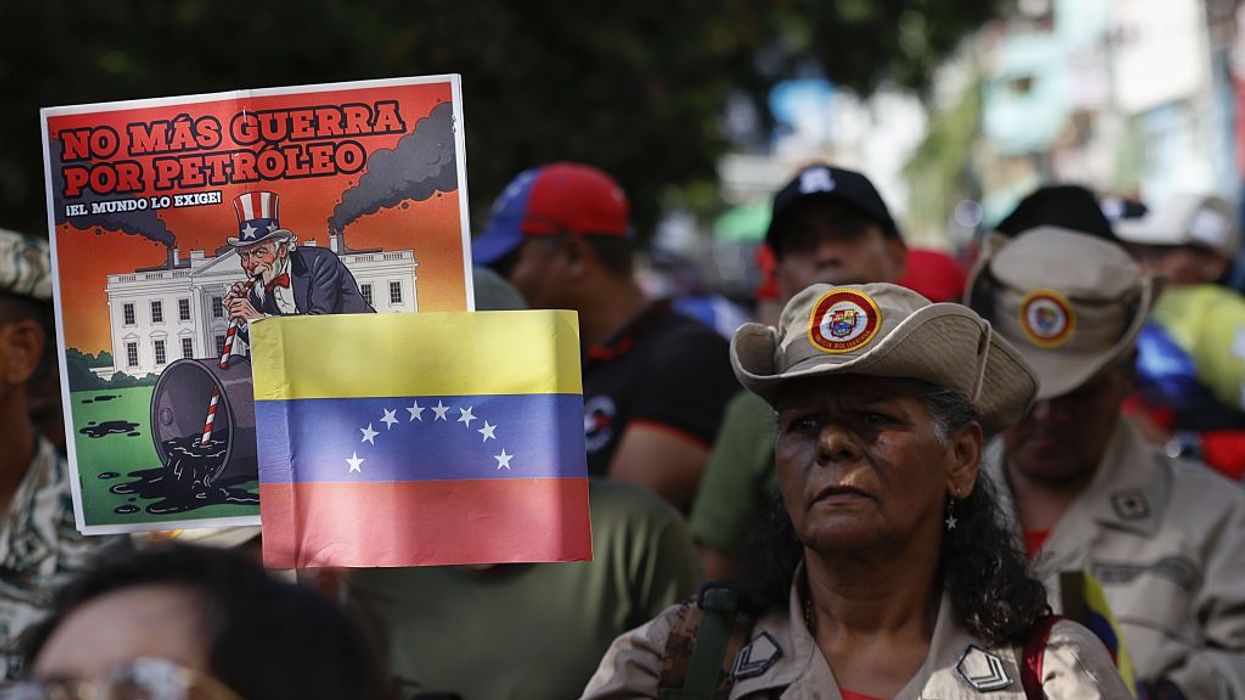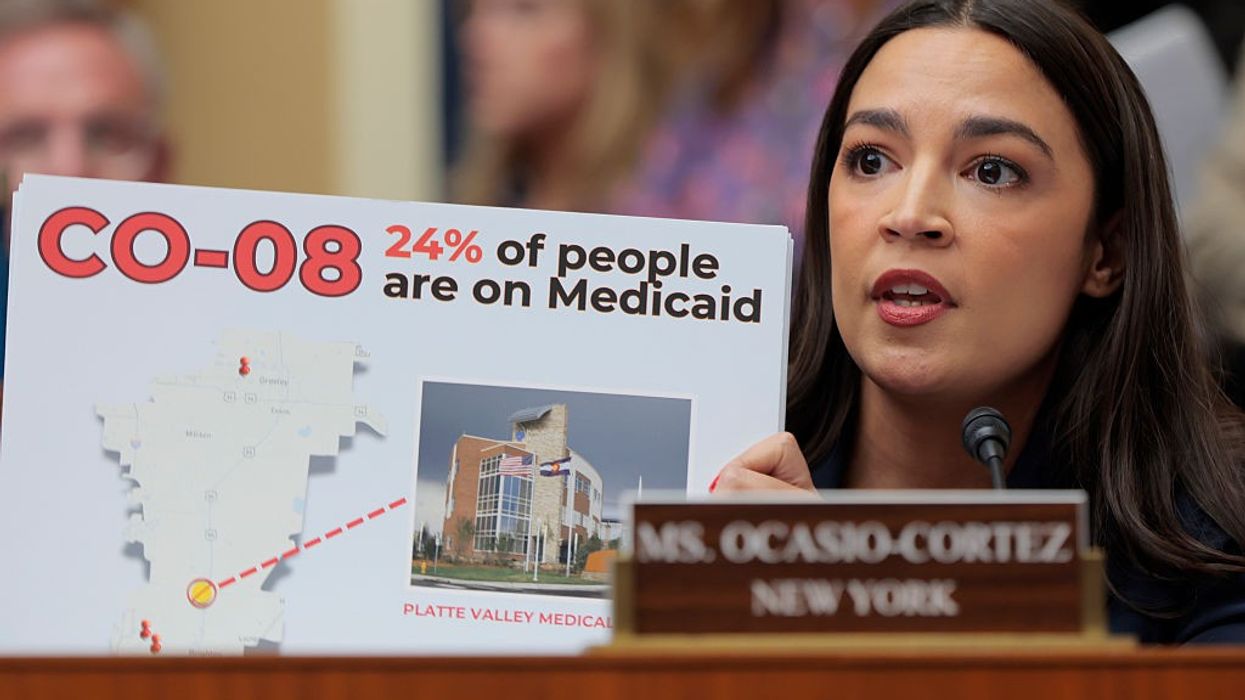April, 29 2009, 04:07pm EDT

New Report Finds CPS Energy Choosing Most Expensive Power Option in South Texas Nuclear Project Expansion
The proposed expansion of the South Texas Nuclear Project (STP) would cost as much as $22 billion, boost the cost of electricity for consumers and curtail investment in energy-efficiency programs and solar power, a report released today by Public Citizen finds.
SAN ANTONIO, Texas
The proposed expansion of the South Texas Nuclear Project (STP) would cost as much as $22 billion, boost the cost of electricity for consumers and curtail investment in energy-efficiency programs and solar power, a report released today by Public Citizen finds.
The report, "Costs of Current and Planned Nuclear Power Plants in Texas: A Consumer Perspective," provides some answers to many of the key questions about CPS Energy's proposed partnership in the STP expansion that municipal candidates have said must be resolved before they can decide what is right for San Antonio.
"We've been down this road before," said Tom "Smitty" Smith, director of Public Citizen's Texas office. "This nuclear expansion will have a significant impact on consumers in San Antonio, and perhaps throughout the Texas market. It is an irresponsible investment."
The report also finds that the massive capital outlays for nuclear power may drain available financial resources needed to pursue San Antonio's visionary Mission Verde project, Mayor Phil Hardberger's aggressive plan to green the city's infrastructure, businesses, energy sources and technology. According to Peggy Day, from the Alamo Group of the Sierra Club, Mission Verde could turn San Antonio into one of the nation's greenest cities, even as it creates nearly 10,000 local and non-local jobs.
"This new report indicates that we're going to have to decide now which energy future we want for San Antonio," said Bexar County Commissioner Tommy Adkisson. "If CPS becomes a partner in the South Texas Project expansion, we are simply not going to have the financial resources to front Mission Verde. We can either choose the most expensive option possible and send our jobs to Bay City and overseas contractors, or pay a fraction of the cost to create thousands of jobs here at home and power the city with clean, green energy."
To estimate the real cost of the STP expansion, report author Clarence Johnson, an independent consultant with 25 years of experience in the electric utility regulatory world, investigated the construction and cost history of the original power plant. Johnson also served as the director of regulatory analysis for the Texas Office of Public Utility Counsel and has presented expert testimony in nearly 100 regulatory proceedings on a wide range of issues, including generation capacity expansion.
The report finds that given the history of cost overruns and delays from the last generation of nuclear power plants, the construction cost and schedule for STP ($5.8 billion with a four year completion time) are incredibly optimistic. Most nuclear power plants built in the 1970s and 1980s left a legacy of cost overruns and construction delays, but coming on line seven years after the proposed construction date and four and a half times over budget, STP, which was completed in 1989, was among the worst.
"Studies produced by the NRC itself have found that things went as poorly as they did due to the inexperience of the project team," Johnson said. "The single most important factor in assuring quality and timeliness in nuclear power plant construction is prior nuclear construction experience. Unfortunately, NRG Energy, the company building STP, lacks that crucial experience. Given the fact that no new nuclear power plants have been built in the U.S. in two decades, NRG is unlikely to find seasoned nuclear personnel, engineers or project leaders this time around."
The report also finds that the current low cost of nuclear fuel in Texas does not tell the whole story of its real impact on ratepayers. Consumers continue to pay for cost overruns and budget shortfalls from STP's bungled and hugely expensive construction through charges on their utility bills. Customers in the Electric Reliability Council of Texas (ERCOT) continue to pay $3.4 billion for nuclear assets through these transition charges, as well as $45 million a year for nuclear decommissioning, the process of safely retiring, dismantling and storing the waste from a nuclear power plant.
"Consumers pick up the tab when these nuclear power plants go over budget," said Eric Lane, representative of the Consumer Energy Coalition. "We're still paying legacy costs for STP and are helping NRG save up for when that plant has to be decommissioned. When the time comes, if NRG hasn't collected enough money to pay for decommissioning costs, it will just keep charging ratepayers even after the plant ceases to produce electricity. We really need to be looking at what San Antonio is going to have to pay for its share of this $20 billion."
Another hidden cost for ratepayers exists in the form of nuclear subsidies. The nuclear industry has been very successful at securing federal subsidies for this new wave of nuclear projects in the form of loan guarantees, production tax credits, investment tax credits and insurance. Of these, loan guarantees impose the greatest risk on taxpayers. The Congressional Budget Office has stated that the likelihood of default on these loans is 50 percent or greater. In the last wave of nuclear power plant construction, at least 40 nuclear power plants were abandoned prior to completion - proof that the risk to taxpayers is real and substantial.
NRG also already holds a dominant market share of the ERCOT market. If STP is expanded as proposed, NRG will have the even greater potential to exercise market power and drive up generation prices to reduce the losses that will result from inevitable cost overruns and construction delays. The high cost of nuclear capacity could indirectly translate into higher power prices for all Texas consumers.
Finally, the report finds that nuclear energy is uneconomical when compared to other alternative sources of power generation. A new nuclear plant will be 50 percent more expensive over its life than the primary conventional alternative, combined cycle gas generation. This runs squarely against industry claims that nuclear power represents the cheapest energy source available.
"Even when compared with renewable energy sources such as wind and solar, nuclear power simply does not measure up," said David Foster, director of Clean Water Action. "But energy efficiency is by far our most cost effective resource. For just 15 percent of what we would spend on STP, Texas could save as much energy as would be provided by 14 new nuclear reactors. We don't need to generate massive amounts of new energy when we can use less for just a fraction of the cost."
To download the full report, a fact sheet of its major findings and a chronology of STP, visit https://www.citizen.org/texas.
Public Citizen is a nonprofit consumer advocacy organization that champions the public interest in the halls of power. We defend democracy, resist corporate power and work to ensure that government works for the people - not for big corporations. Founded in 1971, we now have 500,000 members and supporters throughout the country.
(202) 588-1000LATEST NEWS
House GOP to Skip Town Early for Holiday Recess as Healthcare Premiums Soar, Epstein Files Loom
"The same GOP that voted last summer to give the richest Americans and most profitable companies trillions of dollars in tax cuts somehow can't find the funds this winter to ensure 20 million Americans can afford their health insurance."
Dec 18, 2025
The US House was originally scheduled to be in session on Friday, but the Republican leadership gave members a green light to skip town on Thursday for the two-week holiday recess without voting to prevent massive health insurance premium hikes for tens of millions of Americans.
The decision to let members leave early came after House Democrats secured enough support from swing-district Republicans to force a vote on legislation that would extend Affordable Care Act (ACA) subsidies that are set to expire on December 31, sending premiums soaring.
Democrats on Wednesday demanded an immediate vote on the proposed three-year extension of the ACA tax credits, but Republicans instead pushed to the floor and passed their own healthcare bill that would leave around 100,000 more Americans uninsured per year over the next decade—on top of the millions set to lose coverage due to the expiration of the enhanced subsidies.
The GOP bill is doomed to fail in the narrowly Republican-controlled Senate, which voted down a Democratic push for an extension of the subsidies earlier this month.
More than 20 million Americans relied on the tax credits to afford health insurance. With their expiration, ACA marketplace premiums are set to more than double on average, pricing many people out of coverage entirely.
"Congressional Republicans could have followed through on their promises to help families afford the basics by extending the premium tax credit enhancements to help them enroll in affordable, comprehensive coverage. Instead, they recycled old ideas, refused to address the current affordability crisis—and made plans to go home," Sharon Parrott, president of the Center on Budget and Policy Priorities, said in a statement Wednesday.
"On the brink of this deadline, some Republicans have recognized that the stakes for families are too high to do nothing," Parrott added, pointing to the four GOP lawmakers who signed the discharge petition. "A House bill to extend the premium tax credit enhancements now has the required signatures on its discharge petition to force a vote on the House floor. Republican policymakers should step up and put the needs of individuals and families first."
"If Speaker Johnson refuses to bring forth the vote, he’s telling the American people loud and clear that rising healthcare costs are acceptable to him."
It's unclear when the discharged House Democratic bill will get a vote, as the chamber is not scheduled to return until January 6, 2026—after the ACA tax credits expire.
"If Speaker Johnson refuses to bring forth the vote, he’s telling the American people loud and clear that rising healthcare costs are acceptable to him," said Rep. Jasmine Crockett (D-Texas), who is running to unseat Sen. John Cornyn (R-Texas) in next year's midterm election.
David Kass, executive director of Americans for Tax Fairness, said in a statement Thursday that "instead of siding with millions of everyday Americans, they voted to increase healthcare costs which will now put affordable coverage out of reach for millions."
"Congressional Republicans once again revealed whose side they're on," said Kass. "The same GOP that voted last summer to give the richest Americans and most profitable companies trillions of dollars in tax cuts somehow can't find the funds this winter to ensure 20 million Americans can afford their health insurance."
The House Republican leadership's decision to start the holiday recess also came ahead of the Friday deadline for the Trump administration to release most of the Epstein files, as required by recently enacted legislation.
"View all political developments for the rest of the week in light of the fact that the Epstein files are supposed to be released on Friday," said Rep. Alexandria Ocasio-Cortez (D-NY). "House Republicans just suddenly cancelled congressional session Friday and are sending everyone home Thursday evening."
Keep ReadingShow Less
63% of US Voters Oppose Attack on Venezuela as Trump's March to War Accelerates
The new poll comes as the US president openly plots to seize Venezuela’s oil supply.
Dec 18, 2025
President Donald Trump has taken increasingly aggressive actions against Venezuela in recent weeks, but a new poll released Wednesday shows US voters are not on board with a new war.
A new poll from Quinnipiac University found that 63% of voters oppose military operations inside Venezuela, with just 25% registering support.
What's more, a US military strike in Venezuela would draw significant opposition even from Republican voters, 33% of whom told Quinnipiac that they would oppose such an action. Eighty-nine percent of Democratic voters and 68% of independent voters said they were opposed to a US military campaign in Venezuela.
Trump's policy of bombing suspected drug trafficking boats in international waters, which many legal experts consider to be acts of murder, drew significantly less opposition in the new survey than a prospective attack on Venezuela, but it is still unpopular, with 42% in favor and 53% opposed.
A potential war is also unpopular with Venezuelans, as a recent survey from Caracas-based pollster Datanalisis found 55% opposed to a foreign military attack on their nation, with 23% in favor.
The Trump administration's boat strikes, which have now killed at least 99 people, have been just one aspect of its campaign of military aggression against Venezuela. The US military last week seized a Venezuelan oil tanker, and Trump has said that it's only a matter of time before the military launches strikes against targets inside the country.
Trump on Wednesday also said that one goal of his campaign against Venezuela would be to seize the country's oil supply.
“Getting land, oil rights, whatever we had—they took it away because we had a president that maybe wasn’t watching,” Trump said while talking to reporters. “But they’re not gonna do that. We want it back. They took our oil rights. We had a lot of oil there. They threw our companies out. And we want it back."
Venezuela first nationalized its oil industry in 1976, and the US has no legitimate claim to the nation's petroleum supply.
Keep ReadingShow Less
AOC Dismisses Premature 2028 Polls, But Says ‘I Would Stomp’ JD Vance
A survey this week showed the congresswoman leading the vice president 51-49 in a hypothetical presidential matchup.
Dec 18, 2025
Rep. Alexandria Ocasio-Cortez gave a cheeky reaction after a poll suggested that she'd slightly edge out Vice President JD Vance in a hypothetical presidential election in 2028.
The survey of over 1,500 registered voters, published Wednesday by The Argument/Verasight, showed Ocasio-Cortez (D-NY) leading Vance 51-49 and winning back several key voting demographics that propelled Trump's return to the White House last year.
As she walked out of the Capitol building Wednesday evening, the Bronx congresswoman was asked about the poll by Pablo Manríquez, the editor of Migrant Insider.
She responded to the question with a laugh: "These polls three years out, they are what they are. But, let the record show I would stomp him! I would stomp him!" she said before getting into her car.
Neither Ocasio-Cortez nor Vance has officially announced a presidential run. But Vance is considered by many to be a natural successor to President Donald Trump. The president and his allies have suggested he could run for an unconstitutional third term.
Ocasio-Cortez, meanwhile, is reportedly mulling either a presidential run or a bid to take down the increasingly unpopular Senate Minority Leader Chuck Schumer (D-NY).
More than two years out from a Democratic primary, Ocasio-Cortez is considered a likely choice to fill the progressive lane in 2028, with support for increasingly popular, affordability-focused policies, including Medicare for All.
However, despite her strong support among young voters, early polls show her behind California Gov. Gavin Newsom and former Vice President Kamala Harris for the Democratic nomination.
Wednesday's poll showed that in a hypothetical contest against Vance, Newsom had a 53% to 47% edge, a margin only slightly larger than Ocasio-Cortez's.
Keep ReadingShow Less
Most Popular


